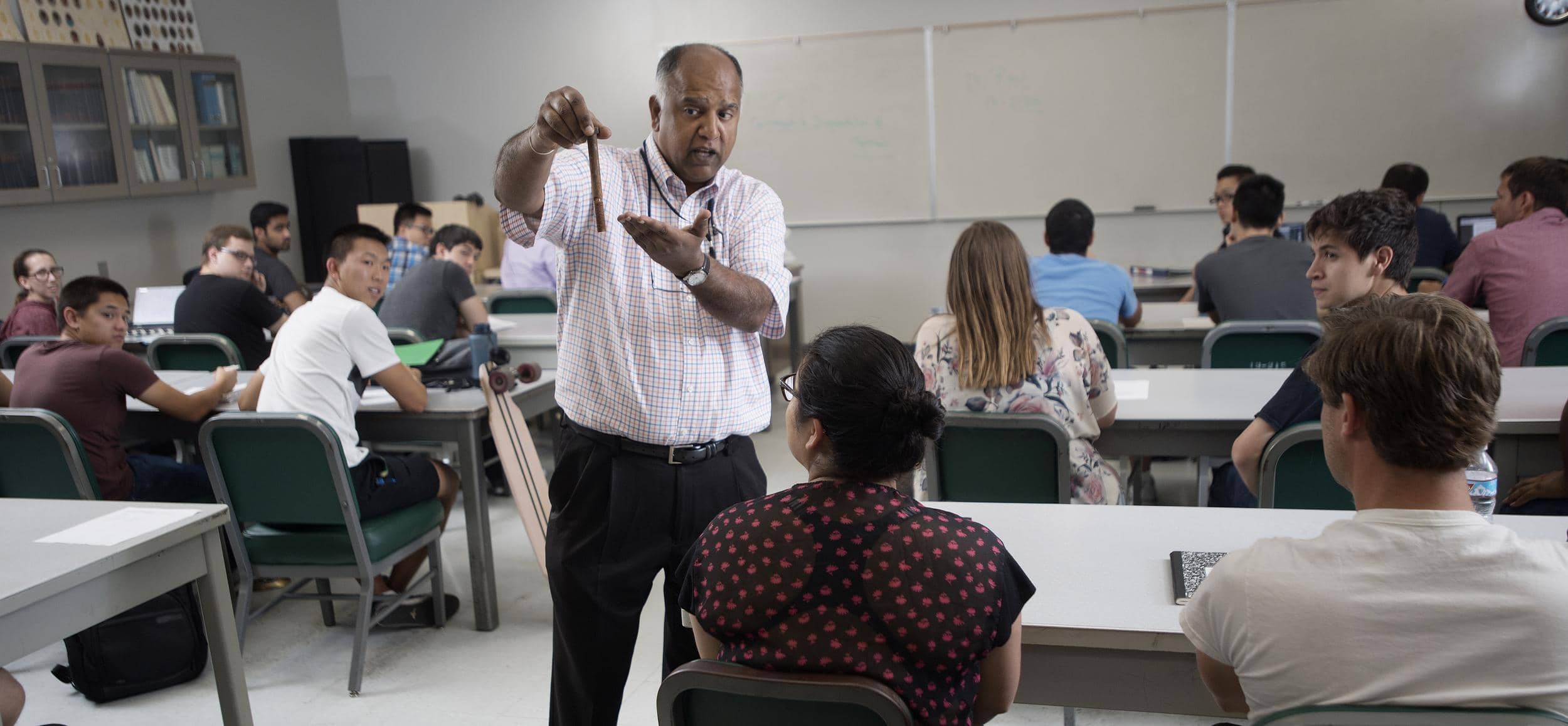Chemical and Materials Engineering Professor Selected as Navy Distinguished Fellow

Vilupanur Ravi, Ph.D., professor and former chair for the Department of Chemical and Materials Engineering, was one of only six professors selected for the U.S. Navy’s inaugural Distinguished Fellows Program.
Announced on Dec. 15, fellows were selected from universities categorized as historically black colleges and universities/minority institutions (HBCU/MI). The program provides funding for Ravi to commit to his research full-time for the next three years. Additional funding allows for the purchase of lab equipment and stipends for student research assistants. With the fellowship valued at over $1.2 million, this is a substantial commitment with a commensurate expectation from the Navy.
“It was a tremendous piece of good news delivered all at once! It took some time to process this,” says Ravi. “I am, of course, overjoyed, but also a bit anxious about delivering on the commitment given the current pandemic and the attendant issues.”
Ravi has been persistent in his attempts to attain a Navy grant for several years. He was finally selected after proposing a corrosion study that aims to better understand the role of calcium oxcide sulfate in corroding gas turbine engines. Vehicles like aircrafts and ships use this type of engine and corrosion is a common foe both in the air and sea. If corrosion is allowed to run amuck, engines fail. The results could be catastrophic, including loss of life. The study hopes to better understand the effects of calcium oxide sulfate to better combat its damaging effects.
“The professors will be able to produce innovative research resulting from the collaborative relationships they build with naval scientists and engineers—and well as from the new lab equipment. Everyone wins," says Reginald Williams, acting director of the HBCU/MI program.
L.C. Selby, rear admiral for the U.S. Navy adds, "Full engagement in naval innovation can help HBCU/MIs expand research capacity, build relationships with naval scientists and engineers, and enrich the learning environment for students both in the laboratory and in the classroom."
Furthermore, Ravi is the only professor amongst the inaugural class of fellows from a university not categorized as a high research activity institution. The other awardees are from universities classified as either R1 (“very high research activity”) or R2 (“high research activity”). This speaks to the significant and compelling value of his research. Ravi's aims are high—he hopes this is not just three productive years of research, but a lasting partnership to help Cal Poly Pomona establish a stronger and sustainable research culture.
"I’m overjoyed by this opportunity. My students and I will work with cutting-edge, world-class universities and R&D personnel from industry leaders across the country,” Ravi says.
A culmination of years of work
For Ravi, this has been decades in the making. After leaving his career in industry and R&D and joining Cal Poly Pomona over 20 years ago, Ravi has been a highly productive scholar. His research has resulted in pioneering developments in materials like composites and advanced alloys, and in corrosion studies of materials in high temperature, molten salt and other unique environments.
“In a way, it's like we’re the underdog, right? Hopefully, the underdog will win in the big game.” - Vilupanur Ravi, Ph.D., chemical and materials engineering department professor and former chair
With such a research focus, why not work in a R1 or R2? For Ravi, his priority is teaching the next generation.
“My belief is that research and projects offer the best opportunities to learn in a deep and meaningful way,” Ravi says. “I offer students challenging projects and research experiences that call upon all sorts of skills encompassing technical hard skills and soft skills like teamwork and communication.”
“I feel strongly if I can offer meaningful challenges like this project to our students, it gives them a chance to grow tremendously and succeed in their careers, and also puts our department, college and university on the map.”
His students echo the same sentiment.
“Working with Dr. Ravi on research projects has been a fun and interesting experience,” says Karla Sanchez, chemical engineering student research assistant. “I am constantly learning new things. With this fundamental study, I am looking forward to learning new techniques and broadening my understanding and knowledge on the topic.”
Nicholas Ury, materials engineering student research assistant says, “It’s been a fun few years working with Dr. Ravi. I learned a lot and even after these years, there are still new things to learn about. There are some interesting experiments that we’re starting to look into how to do, which can expand our lab capabilities.”
Ravi is developing the framework for building on this unique opportunity—he aims to develop an enduring cutting-edge research program.
“I’m using this opportunity to create a research infrastructure, a research culture that can be sustainable,” he says. “The hope is that we can then provide a framework or an example that the Navy could then say, ‘Okay somebody in a non- R1 or R2 can do this level of research.’”
There is much Ravi will have to do. It burdens him to an extent, but he is ultimately motivated by the tremendous opportunity.
“In a way, it's like we’re the underdog, right? Hopefully, the underdog will win in the big game.”